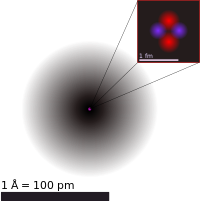
Photo from wikipedia
Models of tropospheric ozone commonly define an “odd oxygen” family (Ox), comprising ozone and species with which it rapidly cycles, in order to compute tropospheric ozone budgets and lifetimes. A… Click to show full abstract
Models of tropospheric ozone commonly define an “odd oxygen” family (Ox), comprising ozone and species with which it rapidly cycles, in order to compute tropospheric ozone budgets and lifetimes. A major Ox loss is the O(1D) + H2O → 2OH reaction, but this may not be an actual loss because the resulting hydrogen oxide (HOx) radicals regenerate ozone in the presence of nitrogen oxides. Here we introduce an expanded odd oxygen family, Oy≡ Ox + Oz, to include both Ox and an additional subfamily, Oz, consisting of HOx and its reservoirs. We incorporate this new accounting into the GEOS‐Chem model, revealing a longer global mean ozone lifetime (73 days vs. 24 days) and greater stratospheric contribution (26% vs. 9%) under present‐day conditions than derived from the standard Ox budget. Tracking the Oy budget may provide better understanding of the discrepancies between global models in their computations of ozone sources and sinks.
Journal Title: Geophysical Research Letters
Year Published: 2020
Link to full text (if available)
Share on Social Media: Sign Up to like & get
recommendations!